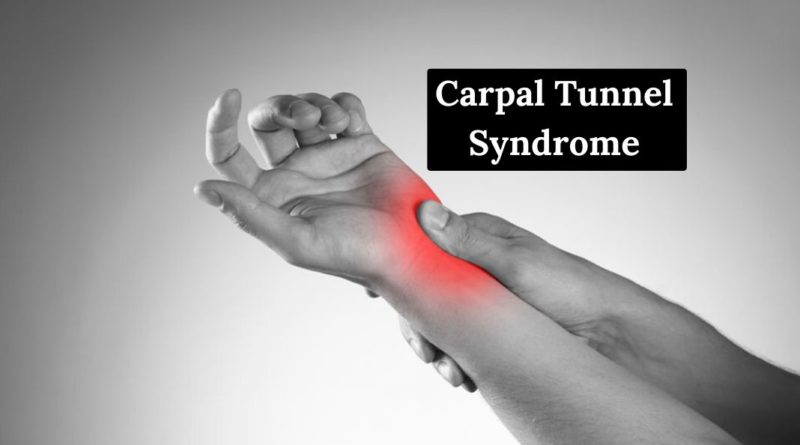Carpal Tunnel Syndrome: Symptoms, Causes, Diagnosis
Carpal tunnel syndrome is a disorder that causes numbness, tingling, and other symptoms in the hand and arm. This syndrome is manifested by compression of the carpal tunnel nerve, a narrow duct located in the wrist, on the palm side of the hand.
Table of Contents
What is Carpal Tunnel Syndrome?
Carpal tunnel syndrome is a neurological alteration due to compression of the so-called median nerve as it passes through the wrist on the way to the hand. This nerve originates from or originates from the cervical spinal cord and travels throughout the upper limb to provide strength and sensitivity to the muscles of the forearm and fingers. It is a very frequent health problem that affects between one and five people in a thousand.
What are the causes of Carpal Tunnel Syndrome?
In most cases, the cause is not known and we say that it is of idiopathic origin. Other times, however, we know that it is caused by various states, systemic diseases, and local processes, among which pregnancy, diabetes mellitus, rheumatoid arthritis, hypothyroidism, obesity, and trauma stand out for their frequency.
This disease has a higher incidence in women between 30 and 60 years old and in manual workers such as butchers, musicians, etc.
How and why does this syndrome occur?
The wrist is made up of different bones and ligaments over which the tendons of the forearm muscles pass to insert into different structures of the hand. This determines that, under normal conditions, the so-called carpal canal or tunnel is a certain narrow structure through which the tendons pass somewhat tightly.
The disease can appear when the capacity of the carpal tunnel decreases due to injury or inflammation of the tissues that surround it, or when there is an increase in the volume of its content, as in cases of inflammation of the tendons that cross it. The compression of the median nerve by the so-called annular ligament of the carpus is characteristic, on which it will often be necessary to act as we will see later.
How does this disease manifest?
The symptoms that characterize this disease are pain and numbness (paresthesias) of the areas that precisely innervates or through which the median nerve is distributed, that is, the palm of the hand and the back of the phalanges of the first three fingers and, oddly, the outer half of the fourth finger, although many people have symptoms throughout the hand.
The person with this syndrome notices the symptoms more intensely at night when lying down, often forcing them to shake their hands or let them hang from the bed to relieve pain. Other times, pain and numbness make it difficult to sleep and in the morning when you wake up you have the feeling that your whole hand has become inflamed.
The pain may be burning or feel like a burning hand and may spread to the forearm and arm. In almost half of the cases, both hands are affected. In advanced stages, the nerve injury produces atrophy and weakness of the muscles of the so-called thenar eminence, that is, the muscles that are at the root of the thumb and that produce that characteristic muscular protrusion of the hand.
How is this problem diagnosed?
The diagnosis is fundamentally clinical, that is, the doctor will suspect that the patient suffers from this problem after knowing the symptoms and after carrying out a small physical examination in which he will try to reproduce the pain and numbness of the fingers (1) with two maneuvers:
Tinel’s signs
This test consists of tapping the patient’s wrist with his fingers, reproducing the pain and paresthesias at the patient’s fingertips.
Phalen’s signs
It consists of flexing the wrist in a sustained way for a minute, which can also reproduce the symptoms.
A fundamental test for the diagnosis of this disease is the so-called electromyography (EMG), which consists of examining the sensory and motor conduction of the median nerve by implanting needles in the path of the nerve, the result of which will be abnormal if the nerve is injured or damaged in any way.
In the event of diagnostic doubt, radiography, ultrasound, and computerized axial tomography (CT) of the wrist and blood tests have also been used as complementary tests.
What other diseases can this syndrome be confused with?
Although the diagnosis of this disease is often relatively simple, sometimes the doctor will have to establish the so-called differential diagnosis with other diseases, such as other neurological changes due to nerve entrapment, changes in the cervical nerve roots, some brain changes due to deficiency of transient blood supply or even with the so-called overuse syndrome, which affects manual workers.
How is this disease usually treated?
In case of intermittent, or mild, to moderate symptoms, the initial treatment is always conservative:
- Avoid activities that trigger or increase symptoms.
- Treat the underlying disease when it exists (diabetes, hypothyroidism, fractures, etc.).
- Use immobilization splints for the wrist, in a neutral position.
- Taking some medications like nonsteroidal anti-inflammatory drugs or diuretics have shown some utility.
- Perform steroid and anesthetic infiltrations at the wrist.
In the event of more severe symptoms or if initial medical treatment fails, surgery is required by surgical release of the median nerve by severing the overlying annular ligament, which often provides permanent relief. The results are very good if the surgeon has experience in this type of intervention.
[Also Read: Natural Remedies to Relieve Carpal Tunnel Syndrome]




